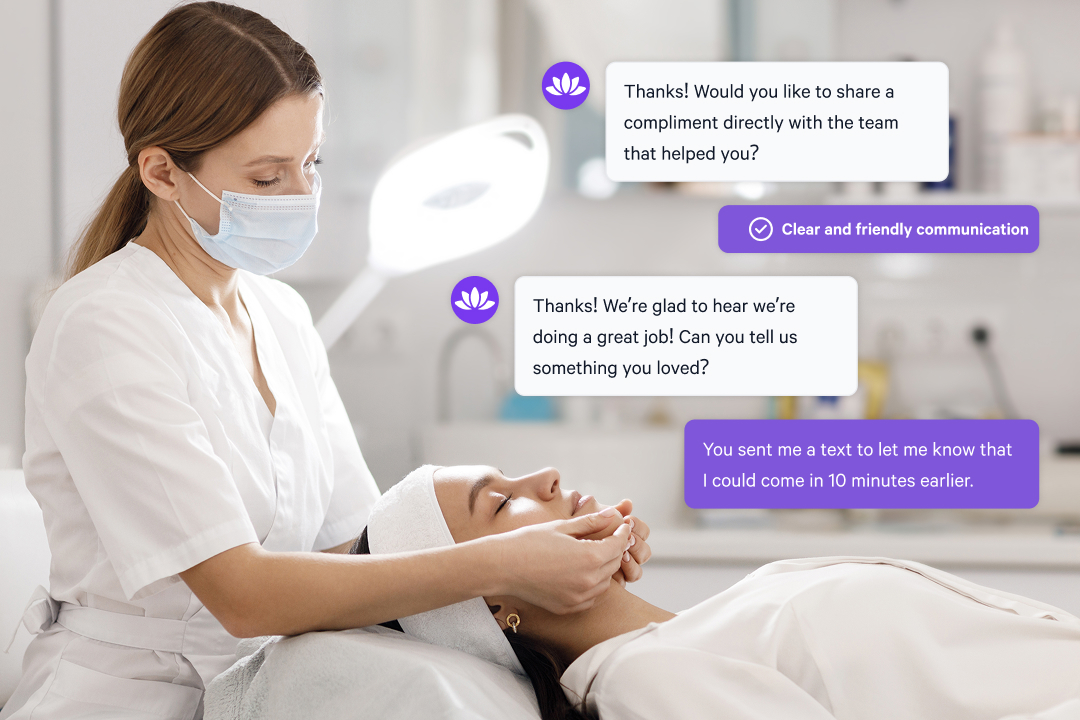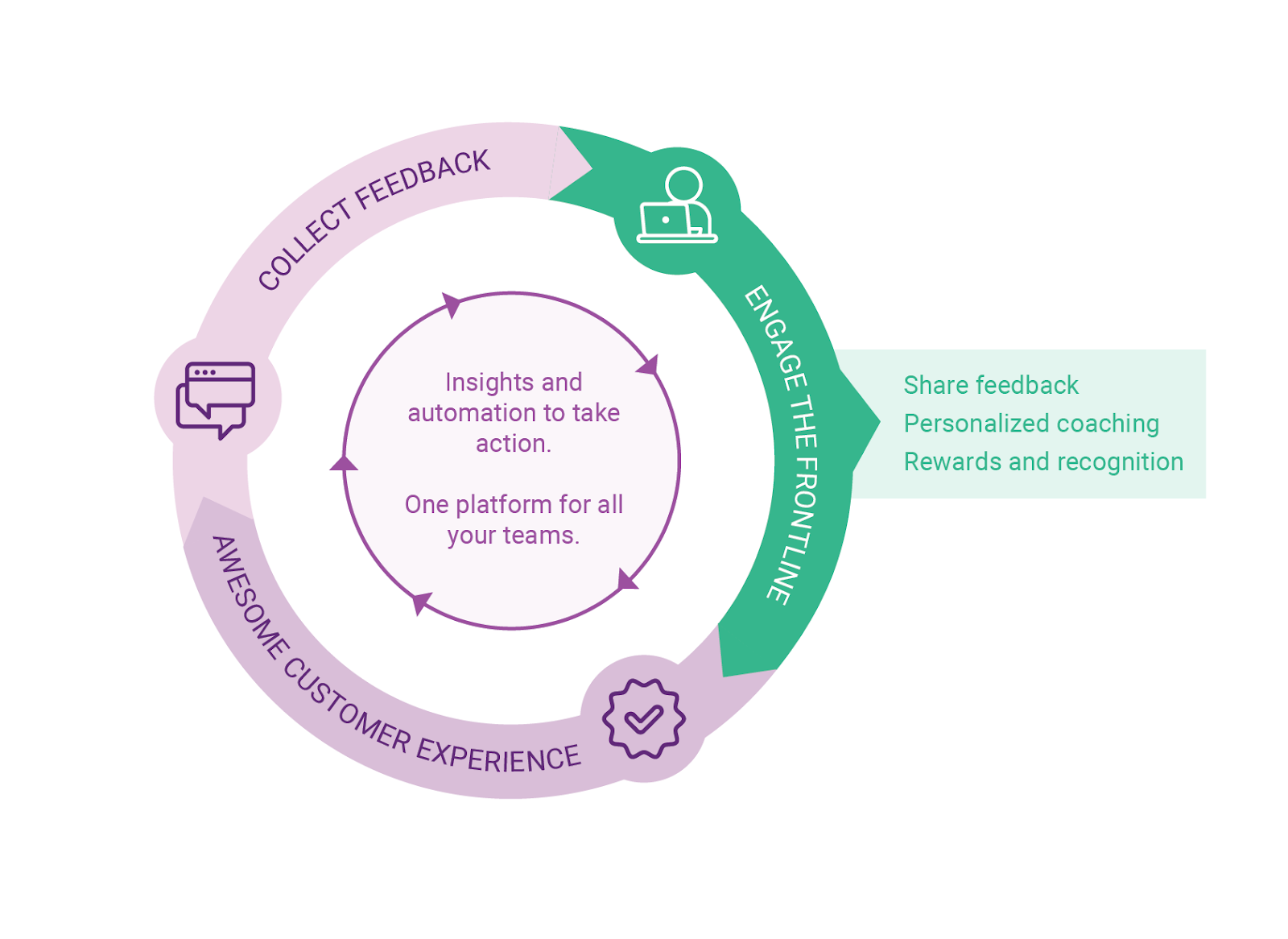
Every clinic claims to listen to patients, but the real question is, what happens next? As Julie Gessin, Chief Operating Officer at Schweiger Dermatology Group, says, “Your feedback is only as good as your ability to act on it.” Yet, across the healthcare sector, there’s a widening gap between hearing what patients say and demonstrating that their voices drive meaningful change.
Top-performing clinics are closing that gap. They’re transforming feedback from a once-a-month survey into a daily operational rhythm, empowering teams to respond in real time, improving care processes, and strengthening patient trust along the way. These organizations don’t just measure satisfaction; they build loyalty by proving that every comment, complaint, and compliment counts.
In a world where patients expect transparency, speed, and empathy, closing the feedback loop is more important than ever. The clinics leading the way aren’t chasing scores, they’re building systems that turn feedback into action and action into loyalty.
Patient experience used to be defined primarily by the quality of care, accurate diagnoses, effective treatments, and clinical expertise. Today, that standard has shifted dramatically. Patients now expect more than excellent care; they judge their experience based on the entire journey, from scheduling an appointment and interacting with staff to the clarity of communication and follow-up support. Every touchpoint matters, and patients want to see that their feedback shapes the way care is delivered.
Healthcare’s digital transformation has accelerated this shift. With the rise of real-time surveys, online reviews, and patient portals, feedback now flows constantly, and publicly. The clinics that thrive are the ones that treat this flow of feedback as a living system, not a box-ticking exercise.
Modern patients expect responsiveness. If they share a frustration about booking delays or unclear post-visit instructions, they want acknowledgement and change, not a generic thank-you email. In this environment, speed and transparency have become new currencies of trust.
The clinics leading the way have recognized that closing the feedback loop goes beyond managing reputation. They use patient insights to make tangible improvements every day, from reducing wait times to improving communication between clinicians and front-desk staff. The result? Stronger relationships, more loyal patients, and teams that are proud of the care they deliver.
“Closing the loop” has become a buzz term in patient experience, but in high-performing clinics, it’s a disciplined practice. At its core, it means ensuring that every piece of patient feedback (whether praise or frustration) leads to acknowledgement, action, and communication back to the patient.
The process can be thought of in four stages:
1. Collect: Gather timely, specific feedback at meaningful touchpoints, often right after a visit when the experience is still fresh. The most effective clinics use short, focused surveys (like NPS (net promoter score) or CSAT)) that capture both emotion and context.
2. Understand: Don’t stop at the score. Analyze responses for patterns and root causes. Is a lower rating tied to wait times, communication gaps, or follow-up clarity? The goal is to find insights that can be acted upon, not just reported. Use AI here to help you sift through and categorize large volumes of patient feedback.
3. Act: This is where the best clinics distinguish themselves. A comment about a long wait might trigger an immediate apology call from a practice manager or an operational review of scheduling. Positive feedback gets shared with the team in real time and through shoutouts, reinforcing behaviors that delight patients.
4. Share: Finally, closing the loop means letting patients and staff know what’s changed. Many clinics use “You said, we did,” updates to highlight improvements, building transparency and trust. Consider a physiotherapy clinic that receives feedback about inconsistent communication between practitioners. Within a week, the team revises its handover process and notifies patients about the improvement. That’s closing the loop — turning insight into impact.

When clinics embed this cycle into their daily operations, feedback stops being a metric and becomes a movement, one that actually drives continuous improvement and deepens human connection.
The clinics that excel at closing the feedback loop don’t just collect feedback — they embed it into the rhythm of their operations. They’ve built cultures, systems, and incentives that turn patient insights into measurable improvements.
Here’s how some of the top clinics and healthcare platforms are making it happen.
In high-performing clinics, feedback reaches the people who can act on it fastest — the frontline team. At Schweiger Dermatology Group, providers receive real-time patient sentiment directly on their phones, desktops, and iPads. Each team member sees exactly what they’re doing well and what they can improve on, day by day. This immediate insight allows providers to take action on patient concerns as they happen, rather than waiting for quarterly reports.
The results speak for themselves: nearly 50% of patient providers improved their individual NPS scores by 12 points in just one year, while positive Google reviews tripled. By empowering frontline teams, Schweiger has made patient experience a day-to-day focus rather than a back-office metric.
[Insert Schweiger video]
Before implementing AskNicely, Healthie could collect feedback easily but struggled to connect it to strategic decision-making. By centralizing and analyzing responses in real time, the team can spot patterns, prioritize improvements, and align product updates with customer needs.
For Healthie, this approach has streamlined operations, reduced manual reporting time by two to three hours per week, and strengthened retention. Data-driven insights ensure that decisions, from product development to customer support, are informed by what matters most to users, transforming feedback from a static report into a strategic asset.
Culture is critical. At Caci, customer experience is central to the business model, and the team goes beyond feedback collection to ensure it drives engagement and loyalty. Through their innovative Caciverse program, frontline staff are rewarded for delivering exceptional patient experiences, as measured by NPS and positive feedback.
This combination of recognition and incentive not only motivates employees but also reinforces the behaviors that make a measurable difference in customer satisfaction. By sharing feedback across the company, from clinic staff to board meetings, Caci has fostered a culture of customer-centricity that drives retention, referrals, and growth across its franchise network.
The clinics and healthcare platforms that consistently close the feedback loop demonstrate that exceptional patient experience isn’t an accident, it’s the result of deliberate leadership practices. Beyond the tactical use of feedback, three key leadership lessons emerge:
Leaders at top clinics don’t treat patient feedback as a compliance exercise or a metric to track in isolation. They integrate it into strategic planning and performance management. This means defining clear objectives around patient experience, linking improvements to business outcomes such as retention, referrals, or revenue growth, and holding teams accountable for acting on insights.
The lesson for leaders: treat feedback as a business-critical asset, not a peripheral activity. By embedding it into strategic discussions and KPIs, leaders ensure it informs decisions at every level, from daily operations to long-term growth planning.
Top-performing clinics understand that processes, standards, and technology alone are not enough. Leaders cultivate a learning-oriented culture, where teams are encouraged to experiment, iterate, and adapt based on what patients are saying. Mistakes or negative feedback are framed as opportunities for growth rather than failures.
For healthcare leaders, this means providing coaching, creating safe spaces for staff to discuss feedback, and celebrating improvements as they occur. When feedback becomes a tool for team development, the impact multiplies, employees feel valued, patients feel heard, and the organization evolves more rapidly.
Exceptional leadership recognizes that satisfied patients rarely exist without engaged employees. Leaders at forward-thinking clinics link patient experience outcomes with employee incentives, recognition, and growth opportunities. By aligning the success of employees with the success of patients, leaders create a self-reinforcing cycle: engaged teams deliver better experiences, which generate higher satisfaction, loyalty, and advocacy.
The lesson: invest in people, processes, and recognition systems simultaneously. Leadership that models this integration sends a clear signal: every team member has the authority, tools, and motivation to act on feedback.
Finally, the most effective leaders measure success not just in NPS or survey scores, but in long-term trends, retention, and patient loyalty. They track the ripple effects of improvements: Are fewer patients churning? Are referrals increasing? Are staff turnover and engagement improving?
The insight for readers: short-term gains in satisfaction are encouraging, but the true value of feedback comes when it drives sustainable operational and cultural improvements. Leadership that balances immediate wins with long-term strategy turns patient insights into enduring business advantages.
Patient expectations continue to evolve, and clinics must keep pace. The future of patient experience is defined by real-time insights, personalization, and predictive action. Technology, from AI analytics to automated workflows, allows organizations to identify trends, anticipate patient needs, and intervene before small issues escalate into dissatisfaction.
However, the future isn’t just about technology. Top clinics will combine data-driven insights with human empathy. Machines can flag patterns and surface opportunities, but leaders must empower teams to act with understanding and care. Clinics that master this balance — leveraging analytics while maintaining authentic human connection — will set the new standard for patient experience.
Another emerging trend is continuous, closed-loop improvement at scale. Rather than relying on periodic surveys or quarterly reviews, successful organizations treat feedback as a living, ongoing dialogue. Every patient interaction becomes an opportunity to learn, adjust, and enhance the experience, creating a culture where innovation is fueled by real-time insights.
Collecting feedback is easy. Acting on it consistently and strategically is where leaders separate themselves from the rest. Clinics that close the loop — empowering teams, leveraging data, and embedding patient experience into the culture — will undoubtedly come out on top.
Leadership matters. Strategic prioritization, a culture of continuous improvement, and linking patient outcomes to employee engagement are the levers that transform insights into impact.
At AskNicely, we’ve seen clinics like Caci, Healthie, and Schweiger Dermatology Group use real-time, actionable feedback to elevate experiences, align teams, and sustain growth. You can read their success stories here.
Curious? Book a demo.